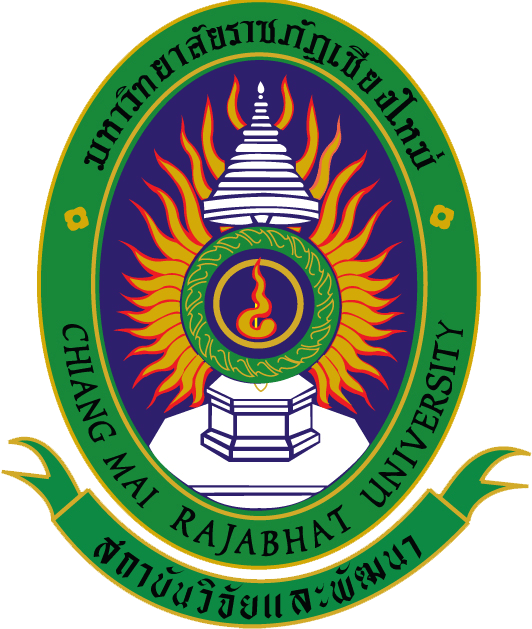
ระบบสารสนเทศงานวิจัย สถาบันวิจัยและพัฒนา มหาวิทยาลัยราชภัฏเชียงใหม่
Research Information System(RIS)
ความหลากหลาย นิเวศวิทยาและการใช้ประโยชน์ของสาหร่ายขนาดใหญ่ในจังหวัดเชียงใหม่
ผู้ช่วยศาสตราจารย์ ดร.พงษ์พันธุ์ ลีฬหเกรียงไกร
คณะวิทยาศาสตร์และเทคโนโลยี
คำสำคัญ :
เลขทะเบียน :
701-59-SCI-RSPG
บทคัดย่อ
การสำรวจสาหร่ายขนาดใหญ่ในแหล่งน้ำของจังหวัดเชียงใหม่ มีวัตถุประสงค์เพื่อศึกษาความหลากหลาย และการกระจายตัวของสาหร่ายขนาดใหญ่ กับสภาพนิเวศของแหล่งน้ำและนำข้อมูลที่ได้มาสร้างเป็นดัชนีบ่งชี้สภาพแวดล้อม โดยได้ศึกษาในพื้นที่ทั้งหมด 7 อำเภอในจังหวัดเชียงใหม่ 26 จุดเก็บตัวอย่าง ระหว่างเดือน กุมภาพันธ์ 2559 – พฤศจิกายน 2559 พบสาหร่ายขนาดใหญ่ทั้งหมด 4 ดิวิชัน 20 จีนัส 33 สปีซีส์ โดยพบสาหร่าย Division Chlorophyta 45% รองลงมาคือ Division Cyanophyta 27% Division Rhodophyta 23% และ Charophyta 5% ตามลำดับ โดยสาหร่าย Division Chlorophyta มีการกระจายตัวในทุกจุดเก็บตัวอย่างมากที่สุด พบในจุดเก็บ 18 จุดจากทั้งหมด 26 จุดเก็บตัวอย่าง โดยมีสาหร่ายสกุล Spirogyra spp., Rhizoclonium spp., Cladophora sp., Phormidium sp., Compsopogon sp. และ Audouinella sp. พบกระจายตัวอยู่ทั่วไปในแหล่งน้ำของจังหวัดเชียงใหม่ บริเวณจุดเก็บฝายวังไฮ อำเภอเชียงดาว มีความหลากชนิดของสาหร่ายขนาดใหญ่มากที่สุด พบทั้งหมด 7 สกุล 8 สปีซีส์ คือ Microspora sp., Spirogyra sp., Tetraspora sp., Tetraspora cylindrical, Lyngbya sp., Chaetophora elegans, Stigeoclonium flagelliforum และ Phormidium formosum โดยจุดเก็บดังกล่าวมีลักษณะพื้นท้องน้ำเป็นกรวด และก้อนหินขนาดใหญ่ ความเร็วของกระแสน้ำปานกลาง ปริมาณสารอาหารน้อยถึงปานกลาง คุณภาพน้ำดีถึงปานกลาง ส่วนปัจจัยที่ส่งผลต่อจำนวนชนิดและการกระจายตัวของสาหร่ายขนาดใหญ่ในแหล่งน้ำ ประกอบไปด้วย ค่าการนำไฟฟ้า ความขุ่น ปริมาณของแข็งที่ละลายในน้ำ ปริมาณออร์โธฟอสเฟต และไนเตรท ไนโตรเจน โดยสาหรายขนาดใหญ่ ซึ่ง เปนกลุมสิ่งมีชีวิตที่พบเห็นได้ทั่วไป สามารถเจริญได้ในสภาพนิเวศของแหล่งน้ำหลายๆแบบที่แตกต่างกัน ซึ่งสาหร่ายขนาดใหญ่แต่ละชนิดจะมีสภาวะที่เหมาะสมต่อการเจริญแตกต่างกัน อีกทั้งยังเป็นแหล่งอาหาร แหล่งวางไข่ ที่พักอาศัยหลบภัยของสัตว์น้ำด้วยคุณสมบัติข้างต้นนี้ สาหร่ายขนาดใหญ่ จึงมีความเหมาะสมในการศึกษาความหลากหลาย การกระจายตัว และสามารถนำมาสร้างเป็นดัชนี้บ่งชี้สภาพแวดล้อมได้ ดังนั้นงานวิจัยนี้จึงสนใจที่จะศึกษาความหลากหลาย ความสัมพันธ์ของการกระจายตัวของสาหร่ายขนาดใหญ่ กับสภาพนิเวศของแหล่งน้ำในจังหวัดเชียงใหม่ และนำข้อมูลที่ได้นั้น มาใช้เป็นฐานข้อมูลสำหรับการประยุกต์ใช้ใน ด้านดัชนีบ่งชี้สภาพแวดล้อม ด้านที่เป็นประโยชน์ต่อมนุษย์และสัตว์ เช่น ใช้เป็นอาหาร, ยา, เป็นแหล่งอาหาร และที่อยู่อาศัยหลบภัยของสัตว์น้ำ เป็นต้น ซึ่งดัชนีบ่งชี้คุณภาพสิ่งแวดล้อมที่ได้จากงานวิจัยชิ้นนี้ เป็นดัชนีที่ใช้บ่งบอกถึงสภาพนิเวศของแหล่งน้ำ รวมไปถึงบ่งบอกการใช้ประโยชน์เบื้องต้นของสาหร่ายขนาดใหญ่ที่สำรวจพบในการศึกษาครั้งนี้
Abstract
The study aims to survey the diversity and distribution of macroalgaes and its relationships with the various habitats and environmental conditions in Chiang Mai province, northern Thailand. The samples were collected from 26 running and standing water from seven districts throughout the Chiang Mai Province. The study was carried out from February to November 2016. The attached macroalgae that can be seen with the naked eye were scraped as filaments, thalli, brown or green film on hard substratum, rock, cobbles, gravel, sand, branches of trees or other substrates.. Thirty-three species of 20 genera in four divisions were found in this study. The Division Chlorophyta was the most dominate distribution (45%) followed by Division Cyanophyta(27%) , Division Rhodophyta (23%) and Division Charophyta (5%) respectively. The Spirogyra sp., Rhizoclonium sp., Cladophora sp., Phormidium sp., Compsopogon sp. and Audouinella sp. were a common species of Chiang Mai area. The area which found the highest diversity were the old traditional indigenous check dam “Fai Wang Hai” and eight species of seven genera were found in this sites including Microspora sp., Spirogyra sp., Tetraspora sp., Tetraspora cylindrical, Lyngbya sp., Chaetophora elegans, Stigeoclonium flagelliforum and Phormidium formosum. It was concluded that the distribution of macroalgae were depended on the appropriate substrate, water condition as the nutrients and the physical and chemical properties, light intensity and conductivity. The data of this study was use to initiated the macroalgae hand book that could be use by the student and local people. This book included the distribution of macroalge ecological data and the development of the simple method for monitoring the environmental conditions by youth and student that could easier communicated and understood with pictures and symbols. In addition, these data could be used by local people who cultivate the macroalgae in the natural stream and river that they are normally use this organism as a nutritional supply and medicinal propose in their daily life. The book also could be used as the Environmental Education tool for students and local citizens in Northern Thailand.
ไฟล์งานวิจัย
อยู่ในระหว่างการปรับปรุงเนื้อหา404 20 มี.ค. 2561
โครงการอนุรักษ์พันธุกรรมพืช (อพ.สธ.)
สำนักงานโครงการอนุรักษ์พันธุกรรมพืชอันเนื่องมาจากพระราชดำริ สมเด็จพระเทพรัตนราชสุดาฯ สยามบรมราชกุมารี สวนจิตรลดา ถ.ราชวิถี เขตดุสิต กรุงเทพฯ ๑๐๓๐๓
0-2282-1850
admin@plantgenetics-rspg.org